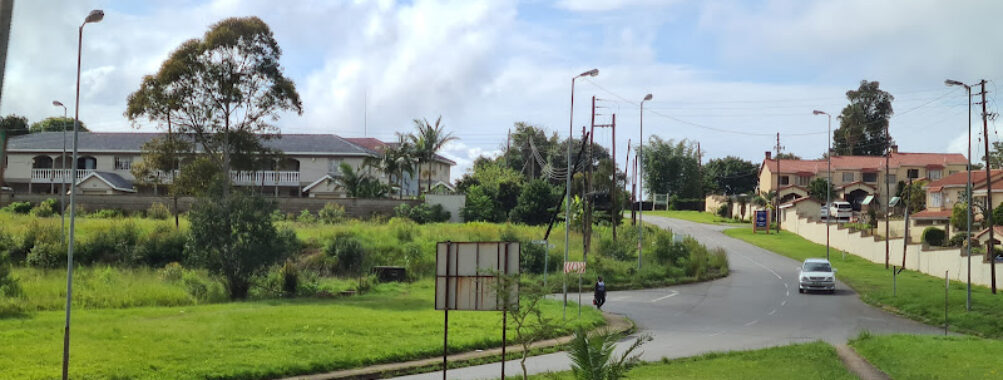
Lobamba
“`html
Table of Contents
Description
Lobamba is one of those places that feels far more important than its size on the map might suggest. Sitting quietly between Mbabane and Manzini in Eswatini’s Hhohho region, this little town is the country’s legislative and traditional heart. It’s where the Parliament meets, where the monarchy holds its most important ceremonies, and where tradition still feels alive in daily rhythms. You’ll find the Lusushwana River meandering nearby, and the town itself tucked between Ezulwini and Mahlanya, with Elangeni just across the way.
What stands out about Lobamba is how it blends the old and the new. On one hand, you’ve got the Ludzidzini Royal Village, where the Queen Mother resides and where cultural events like the Reed Dance and Incwala ceremony take place. On the other hand, there are government buildings and museums that tell the story of Eswatini’s past and present. It’s not a flashy place, and that’s part of the charm. People who come here often comment on how approachable it feels—less polished than Mbabane, but richer in cultural weight.
I remember walking through Lobamba on a warm afternoon and being struck by the sound of kids playing soccer in a dusty field just down the road from the Parliament building. It was such a simple scene, but it captured the balance of everyday life and national significance that defines this town. Lobamba isn’t about ticking off tourist boxes—it’s about slowing down and letting the place show you its layers, one by one.
Key Features
- The Ludzidzini Royal Village, home to the Queen Mother and the site of major cultural ceremonies.
- Eswatini Parliament buildings, where the legislative branch of government operates.
- The National Museum of Eswatini, offering a peek into the country’s history, culture, and wildlife.
- King Sobhuza II Memorial Park, dedicated to the nation’s beloved former monarch.
- Proximity to Ezulwini Valley, often called the country’s cultural corridor.
- Traditional markets and craft stalls where visitors can pick up handmade souvenirs.
- Easy access to nearby towns like Mbabane and Manzini for day trips.
Best Time to Visit
The timing of your visit to Lobamba can completely change your experience. If you’re keen on witnessing cultural events, late August to early September is when the famous Reed Dance takes place, drawing participants and spectators from across the country. December and January bring the Incwala ceremony, another deeply significant tradition tied to the monarchy.
For those who prefer a quieter trip, the cooler months from May to August are a comfortable time to explore without the intensity of the summer heat. I once visited in June and found the air crisp, the skies clear, and the pace of life unhurried. If you’re not a fan of crowds, avoiding the big festival dates might be wise, but if you want to see Lobamba’s traditions in full swing, those events are unforgettable.
How to Get There
Reaching Lobamba is straightforward, especially given its central location between Mbabane and Manzini. From King Mswati III International Airport, it’s roughly a 75-kilometer drive, usually just over an hour depending on traffic. Public transport options like minibuses and shuttle services such as Transmagnific make the trip accessible, though many travelers prefer renting a car for flexibility.
If you’re already in Mbabane or Manzini, Lobamba is practically in your backyard—less than a half-hour drive from either city. The roads are decent, though you might encounter the occasional pothole, so don’t be surprised if your journey feels a little bumpy at times. Personally, I enjoyed the drive from Mbabane, winding down into the Ezulwini Valley with rolling hills on either side—it’s the kind of road that makes you want to stop for photos every few kilometers.
Tips for Visiting
A trip to Lobamba is best enjoyed when you lean into the slower pace. Here are a few practical and personal tips to make the most of it:
- Respect cultural spaces: If you’re visiting during ceremonies, remember that these are not performances but sacred traditions. Dress modestly and follow local guidance.
- Bring cash: Smaller shops and market stalls often don’t take cards. Having local currency on hand will make things smoother.
- Plan around events: If you want to see the Reed Dance or Incwala, check dates in advance as they shift slightly each year.
- Stay nearby: Accommodation options in Lobamba itself are limited, but the Ezulwini Valley has plenty of lodges and guesthouses just minutes away.
- Take your time: Don’t rush through the museums or the memorial park. They’re small but packed with stories that give context to what you’ll see in town.
- Talk to locals: People in Lobamba are generally open and friendly. A casual chat can lead to insights you won’t find in any guidebook.
One last thing—don’t expect Lobamba to wow you with glitzy sights or Instagram-perfect backdrops. The beauty here is subtler, found in the rituals, the history, and the sense of continuity that links the past to the present. If you go in with curiosity and patience, you’ll walk away with a deeper appreciation for Eswatini’s soul. And honestly, that’s worth more than any postcard view.
“`
Location
Places to Stay Near Lobamba
Find and Book a Tour
Explore More Travel Guides
No reviews found! Be the first to review!